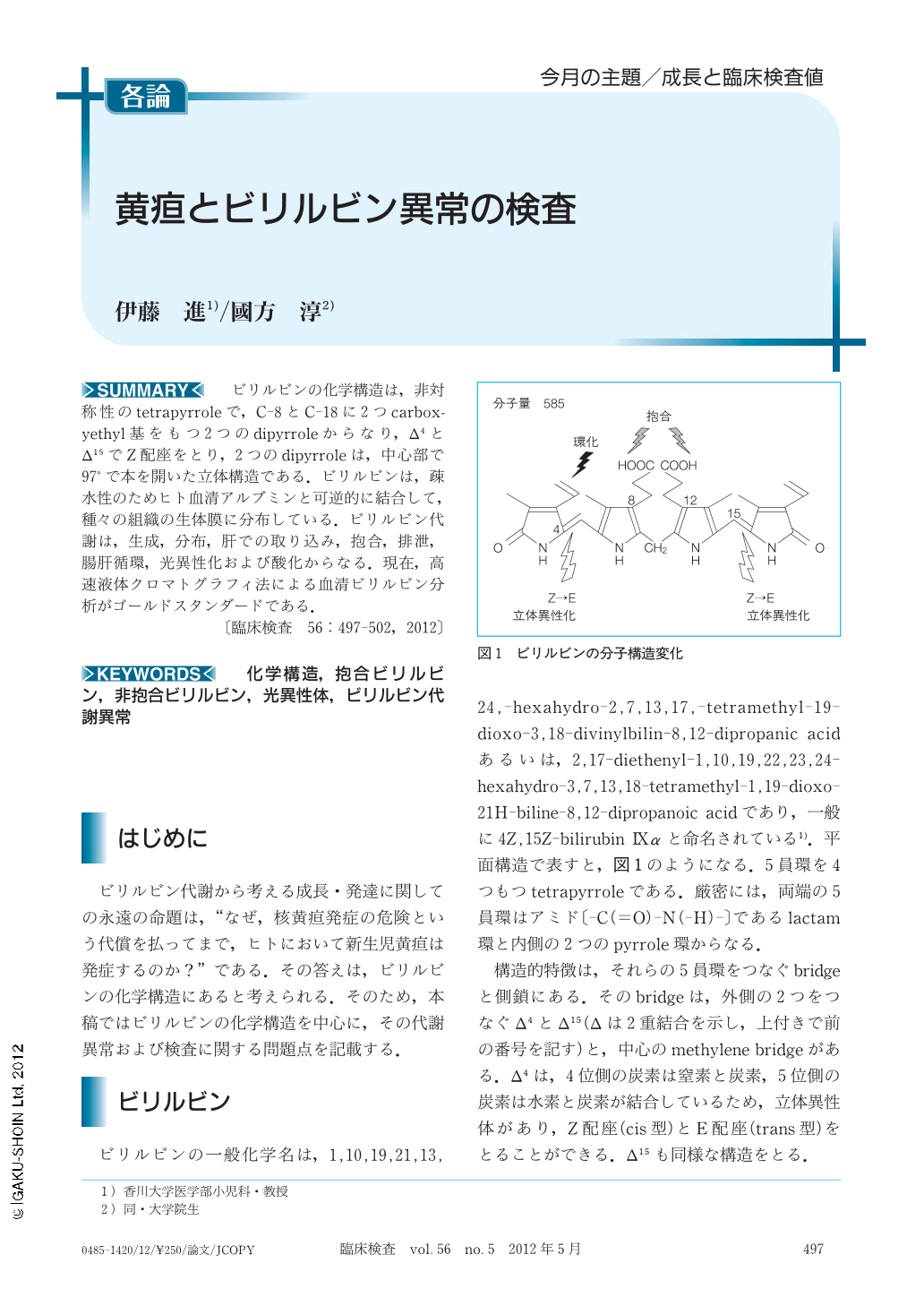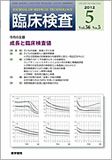Japanese
English
- 有料閲覧
- Abstract 文献概要
- 1ページ目 Look Inside
- 参考文献 Reference
ビリルビンの化学構造は,非対称性のtetrapyrroleで,C-8とC-18に2つcarboxyethyl基をもつ2つのdipyrroleからなり,Δ4とΔ15でZ配座をとり,2つのdipyrroleは,中心部で97°で本を開いた立体構造である.ビリルビンは,疎水性のためヒト血清アルブミンと可逆的に結合して,種々の組織の生体膜に分布している.ビリルビン代謝は,生成,分布,肝での取り込み,抱合,排泄,腸肝循環,光異性化および酸化からなる.現在,高速液体クロマトグラフィ法による血清ビリルビン分析がゴールドスタンダードである.
The chemical structure of bilirubin is a symmetrical tetrapyrrole and the two pyrromethenones with two carboxyethyl groups at C-8 and C-12, are syn-periplanar, i.e. Z-configuration of carbon-carbon double bounds at C-4, C-15 as in a partially opened book, and the angle between the planes about 97°. The bilirubin is reversibly bound by human serum albumin because of its hydrophobic nature, and distributed to biological membranes in various tissues. The bilirubin metabolism consists of production, distribution, hepatic uptake, conjugation, excretion, enterohepatic circulation, photoisomerization and oxidization. Serum total bilirubin receives all those influences. At present, serum bilirubin analysis by HPLC is the gold standard.

Copyright © 2012, Igaku-Shoin Ltd. All rights reserved.


